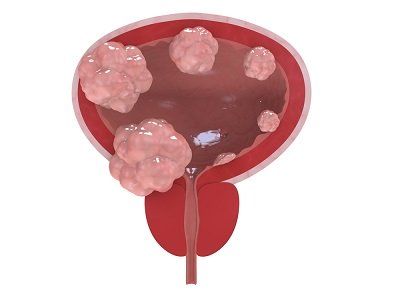FDA Accepts New Drug Application for UGN-102 for Bladder Cancer
The decision is backed by robust efficacy data from the phase 3 ENVISION trial, evaluating UGN-102 in patients with non-muscle invasive bladder cancer.
The decision is backed by robust efficacy data from the phase 3 ENVISION trial, evaluating UGN-102 in patients with non-muscle invasive bladder cancer.

The FDA has accepted a New Drug Application for UGN-102 (mitomycin) in treating patients with low-grade intermediate-risk non-muscle invasive bladder cancer (LG-IR-NMIBC), according to a news release from the drug’s developer, UroGen Pharma.1
Furthermore, the FDA has assigned UGN-102 a Prescription Drug User Fee Act goal date of June 13, 2025. If approved, UGN-102 would become the first FDA-approved non-invasive medicinal treatment for patients with LG-IR-NMIBC.
Support for the decision is backed by data from the single-arm, phase 3 ENVISION trial (NCT05243550), in which patients with LR-IR-NMIBC were treated with UGN-102.2 Topline data show that UGN-102 had a 79.6% complete response (CR) rate (95% CI, 73.9%-84.5%) 3 months after initial dosing of UGN-102. Additionally, of those who achieved a CR at 3 months, the Kaplan-Meier estimate of duration of response (DOR) at 12 months was 82.3% (95% CI, 75.9-87.1%). At 15 and 18 months, DOR Kaplan Meier estimates were both 80.9% (95% CI, 73.9%-86.2%).
“The NDA for UGN-102 is backed by a robust data set demonstrating impressive durability of response across three clinical trials and a favorable safety profile,” Mark Schoenberg, MD, FACS, chief medical officer of UroGen and chair of urology at Montefiore Einstein in New York, stated in the news release.1 “[I]f approved, UGN-102’s ability to achieve durable complete responses and potentially reduce recurrence rates while extending treatment-free intervals will represent a significant advance in managing LG-IR-NMIBC.”
The phase 3 ENVISION trial evaluated the efficacy and safety of UGN-102 in adult patients with LG-IR-NMIBC as primary chemoablative therapy. Patients enrolled in the study (n = 220) initially received 6 once-weekly instillations of UGN-102.3
Instillations consisted of 75 mg mitomycin in 56 mL admixture used to reconstitute mitomycin before instillation. Additionally, medication was delivered via standard urinary catheter in an outpatient setting.
Patients returned to the clinic 3 months after first instillation to determine treatment response. Patients confirmed to achieve CR entered the follow-up period of the study and patients with a non-CR underwent standard-of-care treatment before entering the follow-up period of the study.
The primary end point was the 3-month CR rate after first instillation. Key secondary end points included DOR, durable CR, disease-free survival, and incidence of treatment-emergent adverse events (TEAEs).
The safety profile of ENVISION trial was similar to that observed in other studies evaluating UGN-102. The most common TEAE were dysuria, hematuria, urinary tract infection, pollakiuria, fatigue, and urinary retention, and TEAEs were primarily mild or moderate in severity.
"The FDA acceptance of our NDA is a pivotal moment in our journey to bring UGN-102 to patients,” Liz Barrett, president and chief executive officer of UroGen, stated in the news release.1 “UGN-102 could be the first FDA-approved medicine for LG-IR-NMIBC, offering a novel approach that could expand treatment options and address unmet needs. There is an urgent need for innovative solutions in this space, and we are dedicated to collaborating with the FDA as we prepare for a potential launch of UGN-102 in 2025.”
Key inclusion criteria for the study included LG NMIBC histologically confirmed by cold cup biopsy; a history of LG NMIBC requiring treatment with transurethral resection of bladder tumors; and intermediate disease defined as presence of multiple tumors, a solitary tumor greater than 3 cm, or early or frequent recurrence.
References
- UroGen announces FDA acceptance of its new drug application for UGN-102. News release. UroGen Pharmaceuticals. October 15, 2024. Accessed October 16, 2024. https://tinyurl.com/2ev5mk95
- UroGen announces unprecedented 82.3% duration of response at 12 months in the ENVISION Trial investigating UGN-102 as potentially the first FDA-approved non-surgical treatment for LG-IR-NMIBC. News release. UroGen Pharmaceuticals. June 13, 2024. Accessed October 16, 2024. https://tinyurl.com/2v2ydu93
- A phase 3 single-arm study of UGN-102 for treatment of low grade intermediate risk non-muscle-invasive bladder cancer (ENVISION). ClinicalTrials.gov. Updated July 12, 2024. Accessed October 16, 2024. https://clinicaltrials.gov/study/NCT05243550?tab=table
Newsletter
Stay up to date on recent advances in the multidisciplinary approach to cancer.